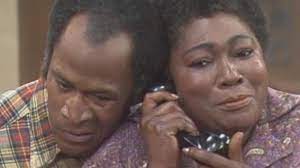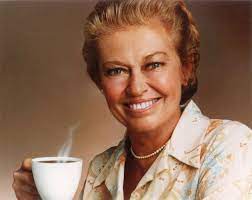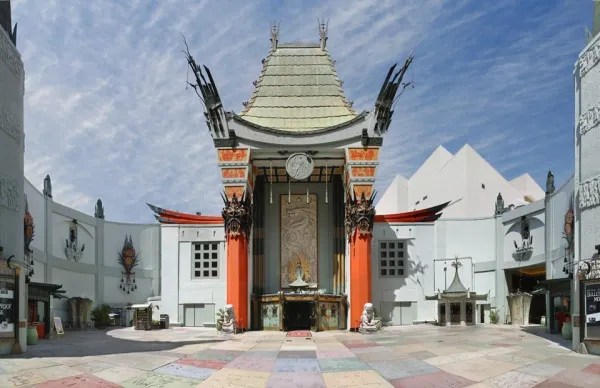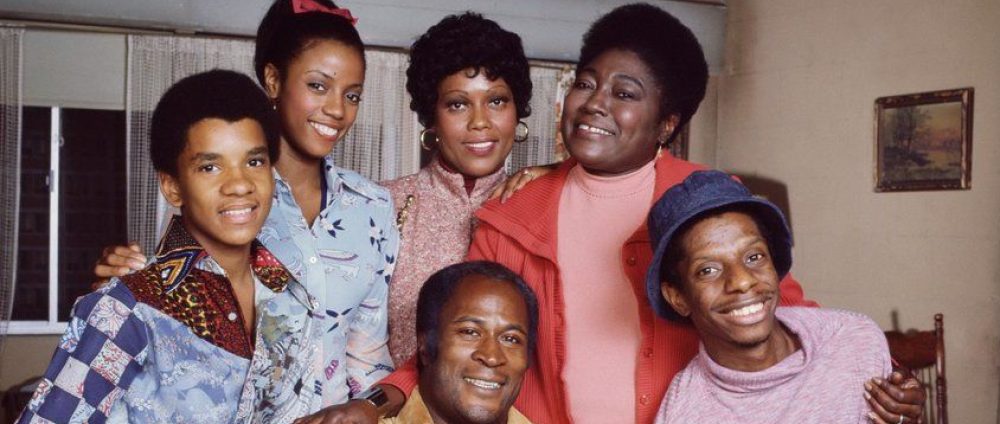
The action in this episode revolves around Florida who, while shopping at her local supermarket, is approached by a man who suggests she might be ideal for his television commercial. When the call from the advertising agency comes, Florida learns that she’s being offered the job and could earn as much as $5,000, promoting a new health tonic called “Vita Brite.”
When a messenger shows up with Florida’s script and a six-pack of the tonic, Florida nervously rehearses her lines but balks at the sections that claim she’s been using the tonic for three months and that it was recommended by her family doctor. “What family doctor? All we got is a bottle of iodine and three bandages,” she protests. “James, they got me telling lies! They hired me for an honest face and I ain’t gonna give it a crooked mouth!” The family tries to convince Florida that she wouldn’t be lying – only acting – and emphasizes the benefits to be gained from the money she would earn. (“This is a dog-eat-dog world out there,” James says, “and I’m tired of being inside of the dog looking out.”) When James urges Florida to sample the tonic, she, James, J.J. and Thelma sit at the kitchen table for a taste test – and promptly discover that the tonic is 18 percent alcohol. Meanwhile, Michael, alone in the living room, breaks out with a rousing rendition of “Tie a Yellow Ribbon ‘Round the Old Oak Tree” and the family realizes that he has guzzled nearly a whole bottle of the tonic. After seeing the effect on Michael, Florida declares that she’s not going to do the commercial and James agrees: “Your mother ain’t selling nothing that’s going to put 11-year-olds on Skid Row.” The closing of the episode shows that the government prohibited Vita Brite from being advertised on television.

Florida’s tendency toward what some might term her “goody two shoe-ism” is on full display in this episode. Although I agree with her final decision to steer clear of the commercial because of its high alcohol content, it’s a little hard to get behind her earlier objection. Her family made perfect sense when they explained that people on commercials don’t necessarily use the products they are promoting – maybe Florida thought that because she was a “real” person and not a professional actor, she shouldn’t offer claims that were untrue, but that’s a stretch. Surely the positive impact of $5,000 (which, incidentally, is more than $30,000 in 2023 dollars) should have been sufficient to overcome Florida’s concerns. Still, I certainly don’t blame her for putting her foot down after seeing Michael’s in his inebriated condition. (And, of course, the point was moot anyway after the government put ITS foot down.)
Pop Culture References:
The Cost of Stamps
As the episode begins, James is going over the family’s bills, separating them into stacks to either pay, stall, or argue about – and then there’s one that he jokes that he’ll “put in the funny papers.” Michael suggests that all of the poor people band together and send letters of protest to Washington about the high cost of living, but James responds that “they stopped us from doing that by raising the price of stamps.” In 1971, the price of a first-class U.S. stamp increased from six cents to eight cents, and in March 1974, about a month before the airing of this episode, the price increased to 10 cents. (As of this writing, a first-class stamp costs a whopping 66 cents.)
Toll Calls
As James reviews his phone bill, he notes that there is a charge for a “toll call” to Oak Park, a suburb of Chicago. First referenced around 1912, a toll call is a long-distance telephone call which has charges that are above the local rate. The term is seldom, if ever, used anymore. Incidentally, “toll-free” – or 1-800 – numbers were introduced in 1967, which allowed users to make long-distance calls without being charged.

Mrs. Olson
When time passes and Florida hasn’t yet received the call offering her the commercial spot, she muses, “I guess I won’t become the Mrs. Olson of the projects.” Mrs. Olson was the name of the TV and print spokesperson for Folgers Coffee; she was played by actress Virginia Christine for 21 years, beginning in 1965. In commercials, Mrs. Olson had a faint Swedish accent and could frequently be seen advising young housewives on how to improve their lives by using Folgers “Mountain-Grown” coffee. Christine’s career began on the big screen in the early 1940s – she would go on to appear in numerous film classics, including The Killers (1946), High Noon (1952), Invasion of the Body Snatchers (1956), and Guess Who’s Coming to Dinner (1967), as well as such television series as The Twilight Zone, Mr. Ed, Perry Mason, and Bonanza. She made her final commercial as Mrs. Olson in 1986.

Grauman’s Chinese Theatre
James jokes that Florida’s commercial appearance could lead to such fame and fortune that she would be asked to place her hand and footprints in the cement at Grauman’s Chinese Theatre. Grauman’s was a movie theater that opened in 1927 on Hollywood Boulevard in Los Angeles and is styled in the design of a giant Chinese pagoda. The theater’s most famous feature is the Forecourt of the Stars, which displays the hand and footprints (or in some cases, legs and noses) of more than 200 celebrities, from classic stars including Humphrey Bogart, Bette Davis, Clark Gable, and Marilyn Monroe, to more modern luminaries, such as Billy Crystal, Tom Hanks, and Cicely Tyson. The theater was purchased in 1973 by Ted Mann and renamed Mann’s Chinese Theater. It reverted to the original name in 2001, but the naming rights were purchased in 2013 by a Chinese electronics manufacturer called TCL Corporation (also known as “The Creative Life.”). The theater is now known as the TCL Chinese Theatre and still shows first-run movies.

Tie a Yellow Ribbon ‘Round the Ole Oak Tree
This was the name of a hugely popular song by a group known as Tony Orlando and Dawn, which consisted of the lead singer (Orlando) and his backup singers, Telma Hopkins and Joyce Vincent Wilson.Born Anthony Orlando Cassavitis, Orlando began his singing career in the 1960s, but he didn’t hit pay dirt until Hopkins and Wilson joined him as “Dawn.” The group had a number of hits, but their best-known single was this 1973 release, which told the story of a soldier returning home from a war after three years and writing a letter to his girlfriend, asking that she tie the ribbon of the song’s title if she’d waited for him. (Incidentally, Telma Hopkins went on to have a successful career in television sitcoms, with recurring roles in the casts of Bosom Buddies, Gimme A Break, Family Matters, and Half and Half.)
Joe Namath, Mark Spitz, and the Ty-D-Bol Man
In trying to illustrate the difference to Florida between “lying” and “acting” in a commercial, Florida’s family members offer several examples. J.J. says, “Joe Namath is doing those pantyhose commercials now. You think he really wears them?” This refers to a 30-second commercial for Beautymist pantyhose that began airing in 1974, featuring famed New York Jets quarterback Joe Namath. As the spot begins, the voiceover narrator promises that the commercial will prove Beautymist panty hose can “make any leg look like a million dollars.” The camera then shows Namath’s pantyhose-covered legs and he tells the viewers why they should choose Beautymist. You can see the commercial for yourself below:
In another example, Thelma queries, “How do we know Mark Spitz drinks milk to build strong teeth?” Spitz was a swimmer who captured the attention and adulation of the nation after winning seven gold medals at the 1972 Summer Olympics in Munich, Germany. Spitz went on to endorse several products; his most popular commercial was for the California Milk Advisory Board, in which he claimed to drink milk on a daily basis.
And James tells Florida that everything seen on television isn’t real, referencing the “guy in the little boat that goes sailing around in the toilet,” and adding, “I ain’t never seen no yachtsman in our john.” He’s talking about the commercials from the 1960s and 1970s for Ty-D-Bol, a toilet cleaner that was known for its oxidizing agent that turned toilet water blue. The spokesman for the product was a man dressed in nautical gear who sailed in the toilet tank in a boat. One of the commercials is below:
Guest Stars:
Ernest Morrison (The Messenger)
When the messenger delivers the Vita Brite script and sample six-pack, Florida asks him if he uses the product and the man responds, “Day and night!” The messenger was played by Ernest Frederick Morrison, Jr., born on December 20, 1912, in New Orleans, Louisiana. His father was also an actor, as were his sisters Florence, who appeared in the 1922 film Penrod, and Dorothy, who was featured in the Our Gang series and in the 1929 musical Hearts of Dixie. Ernie’s first appearance on film was an infant; he took the place of another child who would not stop crying. When young Ernie proved to be perfect on set, the crew nicknamed him “Sunshine” – his father added the “Sammy” and in subsequent films, he would be credited with a variety of names, including Sunshine Sammy, Sambo, and Little Sambo. He made his official film debut in The Soul of A Man in 1916, and the following year, he began appearing in a series of silent films produced by actor Harold Lloyd and co-starring Baby Marie Osborne. A clip from one of their films is below:
In 1919, Morrison reportedly became the first African-American to ink a long-term film contract when he signed with Hal Roach. He would go on to appear in 28 Our Gang/Little Rascals film shorts, and would later recall: “The picture business was great. Our Gang? We all got along. No problems. And when we weren’t working, we were playing, and when we were working, we were playing. Hal Roach, Harold Lloyd, Bob McGowan – they didn’t make it a job, they made it fun. It was a beautiful childhood.” He left Hollywood to spend several years in vaudeville, but he was back on screen in the early 1950s, cast as Scruno in the East Side Kids film series. He also appeared in such films as In This Our Life (1943), starring Bette Davis, and Greenwich Village (1944), where he displayed his dancing talent with a group known as The Four Stepbrothers. His number from the latter movie can be seen below. Ernie is the shortest of the group.
After serving in World War II, Ernie was asked to appear in the Bowery Boys film series, but he declined, saying he “didn’t like the setup.” Instead, he left the entertainment world behind, and worked for numerous years as a quality control inspector for an aerospace company in Compton, California, retiring in 1972. In the 1980s, he was briefly seen in two documentaries, Passion and Memory (1986) which focused on Black performers from the Golden Age of Hollywood, and Harold Lloyd: The Third Genius (1989). Both of these can be found on YouTube.
Morrison died of cancer in 1989 at the age of 76. He is buried at the Inglewood Memorial Cemetery in Inglewood, California.
Other Stuff:
I found this to be curious. The man from the advertising agency called Florida around 4:15 pm to offer her the job, and I’d estimate that an hour passed between the time she got the call and when she decided not to do the commercial. In the final scene, Florida comments on a commercial she sees on television, and Thelma says that could have been Florida. “No way,” Florida responds. “Mr. Moore said the government wouldn’t let them advertise Vita Brite on television.” This exchange makes it seem that at least a few days – and probably more – had passed since Florida decided against appearing in the TV spot. But all of the characters have on the same clothes that they’ve worn throughout the episode. So what happened here? When did the agency inform Florida that the government shut down the commercial? How did “the government” find out about the commercial? When did the “government” reach out to the advertising agency? And who or what is THE GOVERNMENT?? So many questions . . .
~ ~ ~
The next episode: The Checkup . . .
